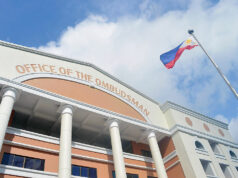Davao de Oro orders remaining small-scale miners in Mt. Diwalwal to relocate
THE DAVAO de Oro Provincial Task Force Naboc River aims to complete the relocation of small-scale gold processing operators in Mt. Diwalwal, also known as Mt. Diwata, this month to pave the way for the full implementation of the river’s rehabilitation plan. The Department of Environment and Natural Resources (DENR) issued a cease and desist order (CDO) on the mineral processing plants in Mt. Diwalwal in Monkayo effective March 15 last year. “The Provincial Naboc River Rehabilitation Masterplan serves as our framework in reviving the river. We need to execute first the CDO as we cannot implement the plan if there is still mercury and cyanide that will flow in the river,” Provincial Environment and Natural Resources Officer Chamberlain J. Babiera said in a statement last week.
TOXIC
The processing plants, which use carbon-in-pulp and ball/rod mills, discharge toxic wastes directly into the river. “It is not only the miners and residents of Mt. Diwata that are at risk, but also farmers downstream who source water for irrigation of the rice fields… in Compostela,” said Monkayo Mayor Ramil L. Gentugaya. The government has a designated processing zone in Mabatas, which has a tailings containment facility. It was built in 2003 when then President Gloria Macapagal-Arroyo issued an executive order for the transfer of the processing plants. Data from the Mines and Geosciences Bureau (MGB) show there were about 300 ball mills in the area. Davao de Oro Governor Jayvee Tyron L. Uy, in his State of the Province Address last month, reiterated his commitment to the Naboc River rehabilitation, which DENR Secretary Roy A. Cimatu declared as one of his priority programs last year. Davao de Oro has one of the biggest gold deposits in the world at 36,328,699 metric tons based on a 1998 report by the Mines and Geosciences Bureau. — Mindanao Bureau



